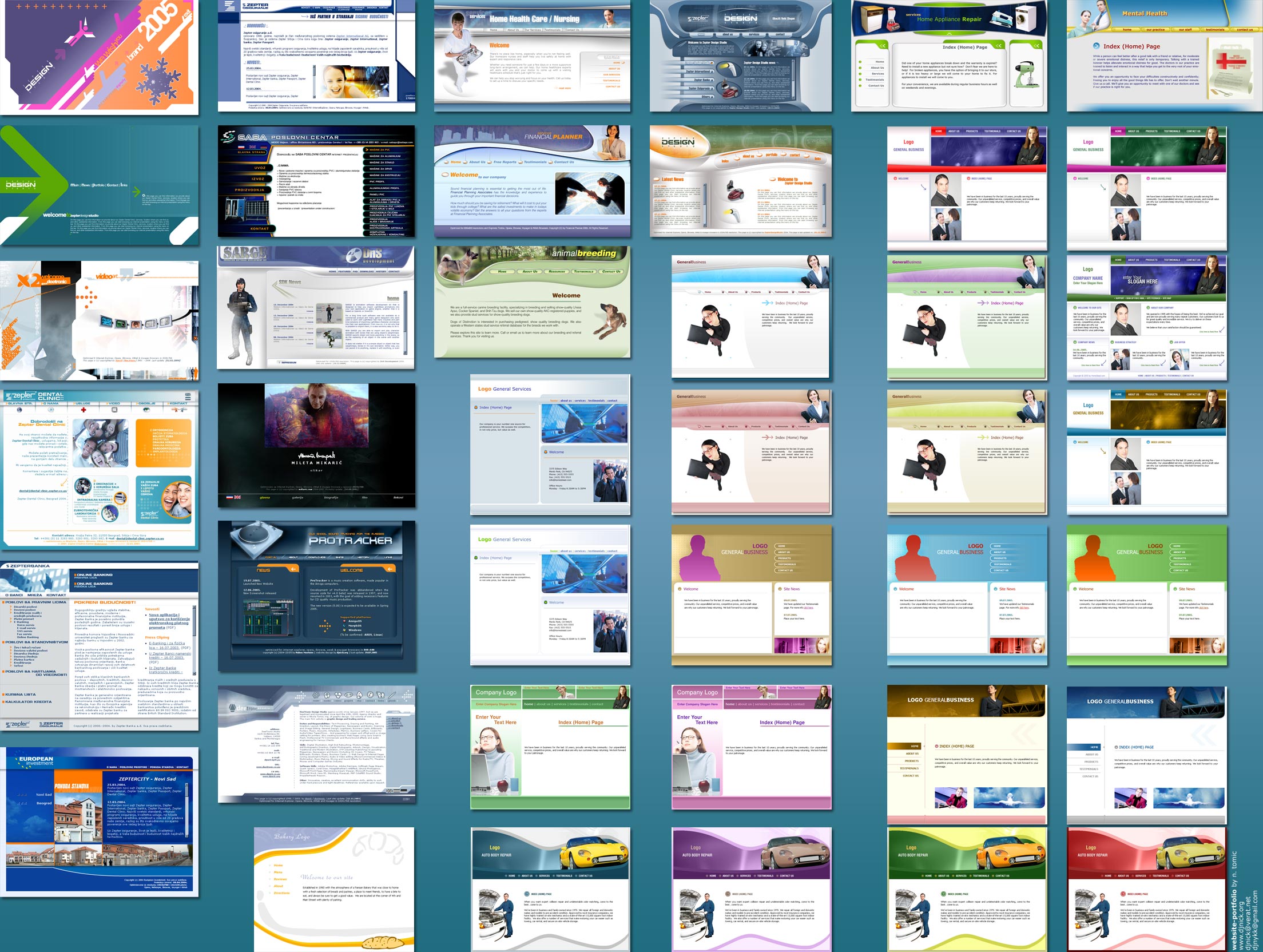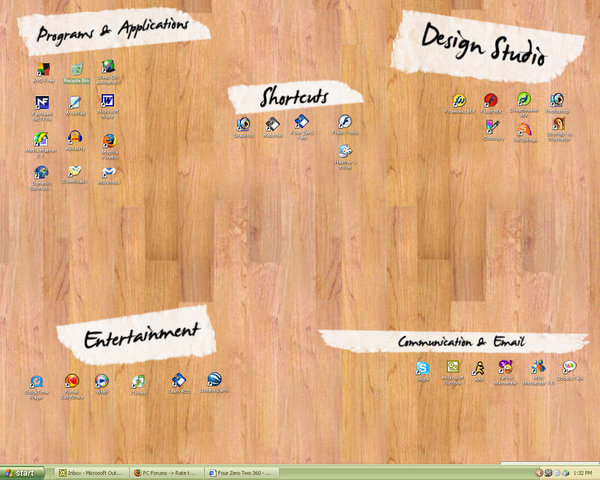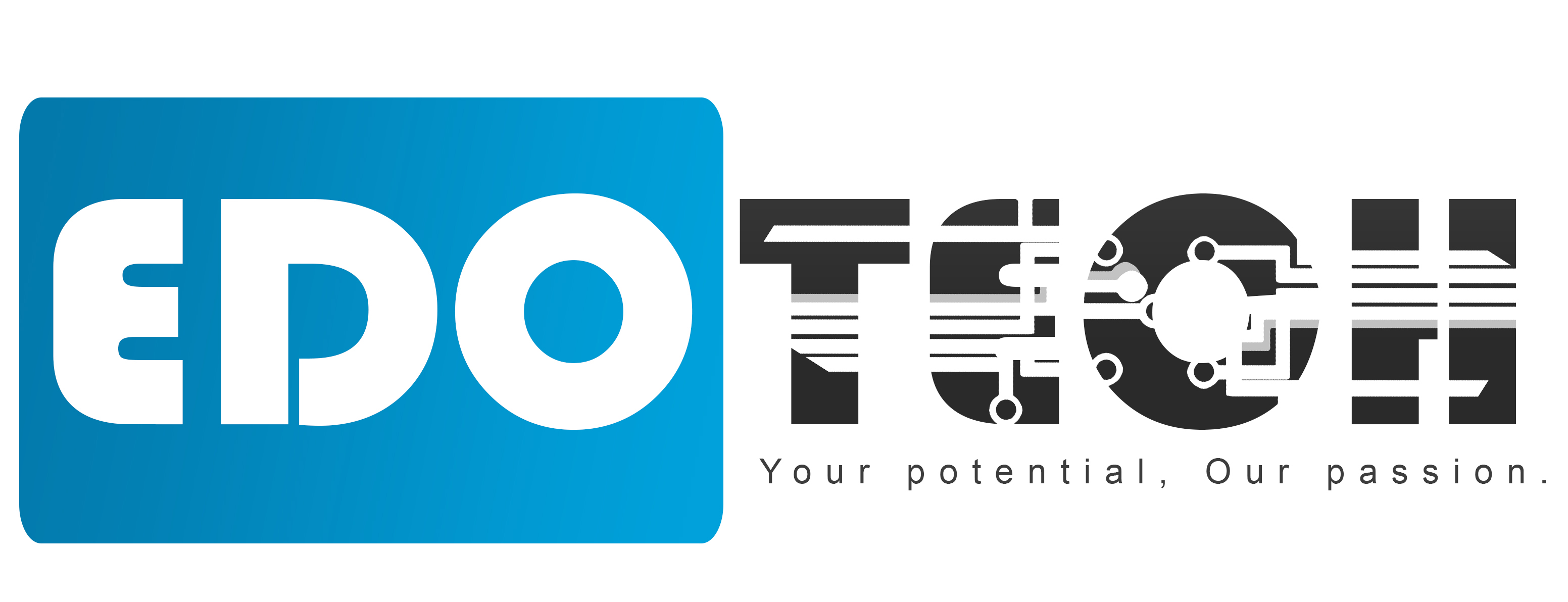Website designers are often concerned about their tangible skills, like hardcore Photoshop skills or a mastery of jQuery. However, becoming successful in the field of web design requires more than just having the right equipment or a wonderful grip on design. There are some very important things that any aspiring web designer should keep in mind when you’re building your professional repertoire. We’ll also provide a useful “reading list” for where you can get more in-depth information.
Intro: Getting Some Perspective
Apart from making an eye-catching web design and balancing a huge amount of information, the challenge that web designers face involves effectively managing their professional careers. The job of a web designer does not end at building websites that look good; you also have to manage all of the things that combine to form a successful business. From planning and execution to marketing and communication, a web designer has to be astute as well as professional at every step taken.
Being truly successful requires a set of characteristics and traits… some of which you might already have, some of which you might be neglecting. These are things that cannot be obtained quickly by reading books or sitting in a classroom; Rather, many of these are skills that take time and experience to cultivate. In my opinion, these are priceless tips that, when applied over time, will help you attain success in the web world.
As a web design professional, following tips will help you turn yourself into a ‘web design rockstar’:
Tip 01: Effective Communication Skills

Effective communication is one of those skills that can make or break you in any field, but it’s especially important in web design where communicating with a client, art director, or developer can dictate the success of a project. It is quite understandable that creative souls are not intuitively chatty in nature; However, when it comes to presenting yourself and selling your work, one has to be bold and clear in his communication with the client. You need to be able to speak intelligently about your design choices – why you chose them and how your design choice is the right one for their business. Also, a lot of small disputes can be resolved easily if you are good at communicating. So, communicate and communicate well, in order to survive and be successful.
Tip 02: Be Able to Sell Yourself

It’s a small world, and from a web designer’s perspective, it’s also a jungle. Web designers face as many competitors as a forty-niner during the gold rush… and only the fittest will survive. In order to make yourself stand out from the competition, you need to let people know about yourself and your skills. Designers are usually humble in nature, however, when it comes to professional success, you’ll have to elbow your way to the top and mark your presence. There are a number of ways you can do so. Word of mouth marketing, social media marketing and even business card marketing can work well. However, if you prefer to sit back in your cozy chair and wait for the clients to know you and come to you, then you are doomed!
Tip 03: Plan Before You Design

While many designers approach projects with a “wait for inspiration to happen” kind of attitude, but the fact is that just a little bit of planning can help that inspiration come a lot more quickly. As such, it’s important to plan and research well before going into the web designing process. Planning can be further divided into three parts:
- Researching about the client’s company
- Asking the client what he wants and expects from the web
- Pondering upon what his competitors are doing and the related industry trends
Make a sketch of the website in your mind and then put it on the paper (if possible). Although planning is a hectic and less interesting process (and so many designers are inclined to skip it), pre-design planning saves your time, money and resources the best. You can read more about “design planning” here.
Tip 04: Evaluate Your Own Work and Get Feedback

The cycle of a web design project ends at evaluation and analysis of your designed work. Being able to accept and implement feedback effectively is an important trait of the creative professionals. Like all other aforementioned factors, having a good eye in pointing out mistakes in your own work is a quality that success-oriented web designers should possess. The web designers should act as a devil’s advocate and judge the success of their website being in the target audience’s shoes. Furthermore, taking some time to have other people check your work for mistakes will go a long ways as well. You can read more about the importance of feedback in Brandon’s article on the subject.
Tip 05: Be a Web Designer, Not a Graphic Designer

It is a general misconception that graphic designers, owing to their computer graphics skills, can also be web designers and vice versa. While this might be true in theory, there are very few professionals that bridge the gap between print-based projects and web-based projects on a regular basis.
The reality is that web designing is a completely separate field of designing, having its own flair and expertise. These are two different mediums and so the target audience and objectives of a websites are entirely different from a piece of graphic design. There is always the possibility that a graphic designer advances to the level of a web designer once he or she learns certain technical skills, but it’s important not to assume that a rockstar graphic designer will instantly be successful when designing for the web. For the success of your web business, you should commit yourself to the field of web designing and specialize yourself in it.
Since graphic design is a separate skill, you may want to hire a specialist graphic designer for particular tasks. That’s easy to do—there are plenty of well-qualified providers to choose from on Envato Studio.
Tip 06: Up-Date Yourself With New Technology

The world of computer technology changes almost every day, and to keep pace with it, a web designer needs to be technologically in tune with the changes in the industry. Slice out a segment of your work-day or week and dedicate it to learning new things in your field. Find out what’s new, what’s trending, and what’s falling to the wayside. If you don’t want to see your competitors take away your business by appearing to be newer and fresher than you, pay heed to this tip.
A good way of staying up-to-date is by seeing what’s popular on a theme or template marketplace like Envato Market. By monitoring the top-selling themes, you can spot trends in what customers are looking for and what other designers are providing.
Tip 07: Don’t Neglect the Web Design “Soft Skills”

If we divide the success factors of a web designer, web designing soft skills may be one of the most important ones. As mentioned earlier, the field of web designing keeps updating at a fast pace. Every other day there is a new technique being introduced. Even if you aren’t the one programming these new tricks, a successful designer needs to learn and understand how to apply these techniques well.
Apart from other core design skills, it’s important to have full grasp on subjects like, the most modern HTML coding, high quality CSS for best cross browser compatibility, smart basic search engine optimization practices, Javascript UI techniques, and to build a foundational site in that you can add more pages or content with the passage of time. Having even just a general understanding of these multiple skill-sets will certainly land you a good job or better clients.
Tip 08: Gain Experience

Experience counts, sometimes even more than your qualifications or skills. Likewise, a web designer’s success depends a lot on your experience in the field. Whether it’s your employer or your potential client, people are interested in knowing how much previous experience you have, which companies have you worked with, and what projects you have worked on. From your perspective, having a broad experience in the field will help you to quickly identify design solutions as they are presented to you in meetings. My advice if you’re still studying in school: Don’t just wait for college to end in order to start working, it’s worth the extra time to start working on web projects right now. The more experience you get under your belt, the quicker you’ll move up in the world of web designers.
Tip 09: Be Organized

A well-organized professional is a born champion. No matter which field of profession you belong to, being organized is important for every person to be successful. Likewise, in the case of web designing, your work can get really messy at times, and this may lead you to many problems. So start off with organizing your computer by classifying texts, pictures, graphics, videos and even sound files in separate folders and label them appropriately. Maintaining a things-to-do list may also help the web designers in keeping themselves organized, amplify their time well and finish the job easier than expected.
Tip 10: Have Business Sense

Web designers, either freelance or salaried employees, should have business mentality when approaching any project. Design in the real world is all about salesmanship, making value assessments, and balancing costs. A successful web designer does not only design the websites for their clients, they create business solutions for them as well. If you are good at understanding an organization’s marketing needs and can get into the minds of the potential visitors, you will certainly have an edge over your competitors. However, if you find managing the business side of design a bit difficult to do, it’s worth looking into working with a larger studio that will take on the major responsibilities for you.
Tip 11: Be a Team Player

Web designing is rarely a one-man show. Whether you work in a big design studio or with a small client, team work is inevitable. While a web designer’s work does not require a large team of professionals (in many cases it can feel like you’re working all alone), it’s important to understand just how often your ability to work with others and delegate tasks will come into play over the course of a project.
Being a good team player means understanding your role in the larger scheme of things, and being helpful to others – as the old saying goes: two heads are always better than one. Learn to effectively collaborate with others, and watch your work improve!
You can find plenty of other web designers to collaborate with on Envato Studio.
Tip 12: Keep an Updated Portfolio

Maintaining a good portfolio is crucial to any designer’s success… but web designer’s face a unique problem: your work needs to stay current! While a poster designer can probably get away with keeping projects from the 1980’s in their portfolios because the designs are still relevant, consider how awful your web-design portfolio would be if you kept projects from the 1990’s!
The portfolio is the best medium for web designers to showcase their abilities and aesthetics, but more importantly, it shows potential clients that you are current, relevant, and active in the design world of right now, not 5 years ago. Rather than aimlessly boasting about the websites you have done, portfolio gives you a solid evidence to show the world what you are capable of. You’ll want a portfolio that covers every aspect of web designing… including layouts, content management, composition, typography, colors, techniques and design rationales. Showing your potential clients the full scope of your work will help you not only to get clients, but it will also help you to justify charging more money as well!
Where to Get More Information
We’ve gone over these principles briefly, but where should you go if you want to dig in and get more information? I’ve put together this handy list of books that focus on the “non-design” portions of managing a web design career.
- Talent Is Not Enough: Business Secrets For Designers
- The Designer’s Guide To Marketing And Pricing: How To Win Clients And What To Charge Them
- The Business Side of Creativity: The Complete Guide to Running a Small Graphics Design or Communications Business
- My So-Called Freelance Life: How to Survive and Thrive as a Creative Professional for Hire
- Creative, Inc.: The Ultimate Guide to Running a Successful Freelance Business
Wrapping it All Up
Web designing is a challenging field. Success in the field actually requires patience and determination to cope with every situation that presents itself, and never to be discouraged whenever things do not go exactly as expected. What you will need in order to make a success of your career in web design is persistence and a ‘never give up’ attitude. Many of you must already be practicing one or many of these tips in your professional life well; However, my aim is to guide the ones who are unaware of these success factors as yet, and to remind those who already know them well.


 WhatsApp us
WhatsApp us